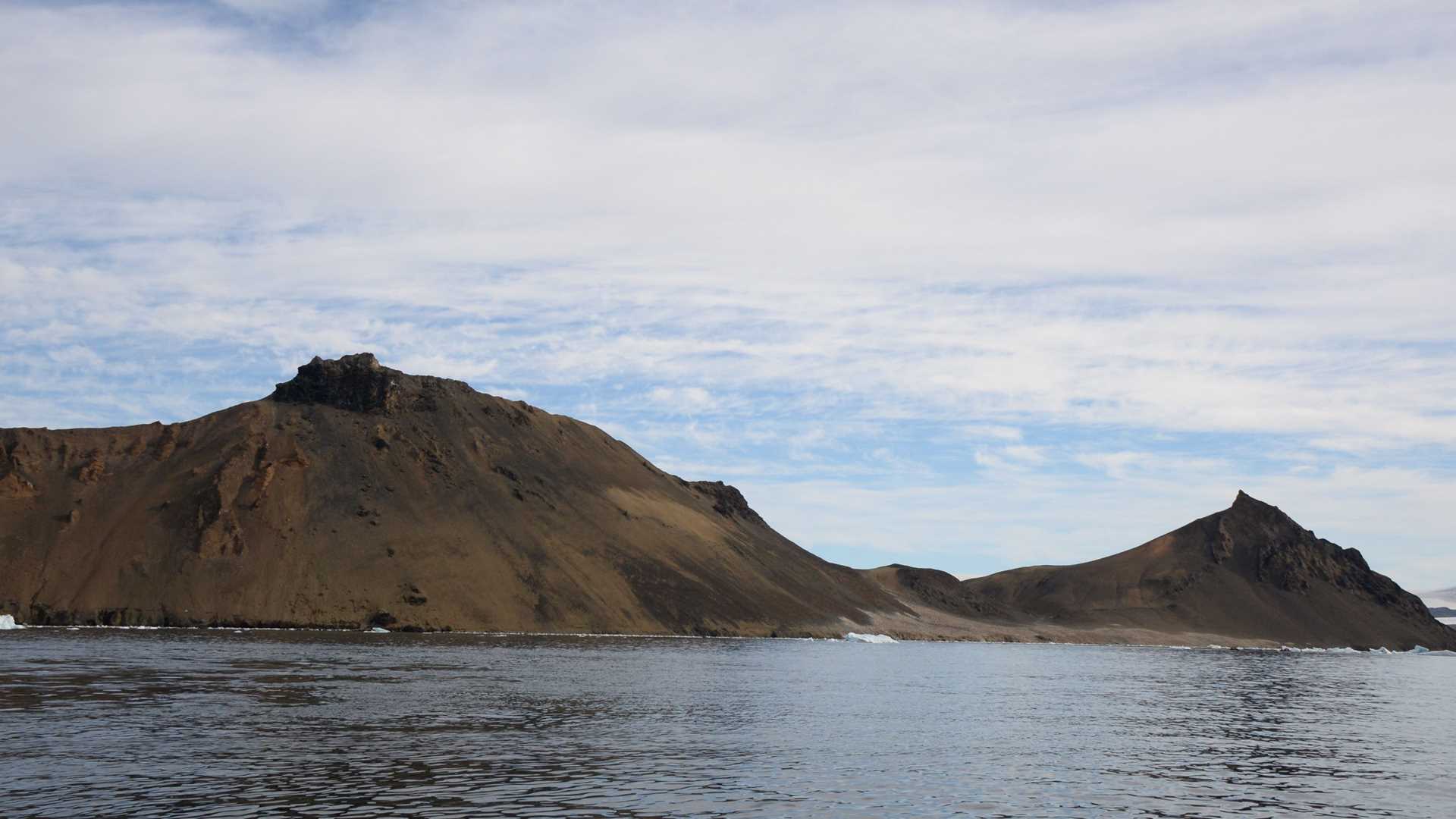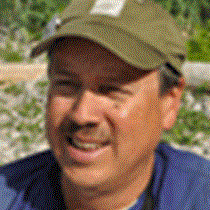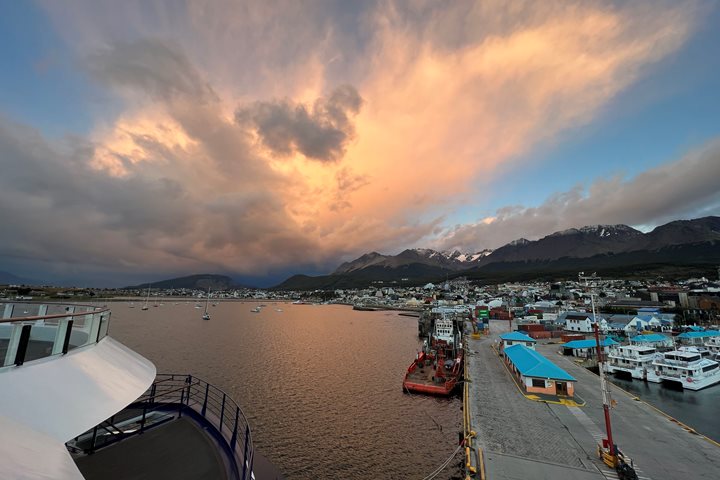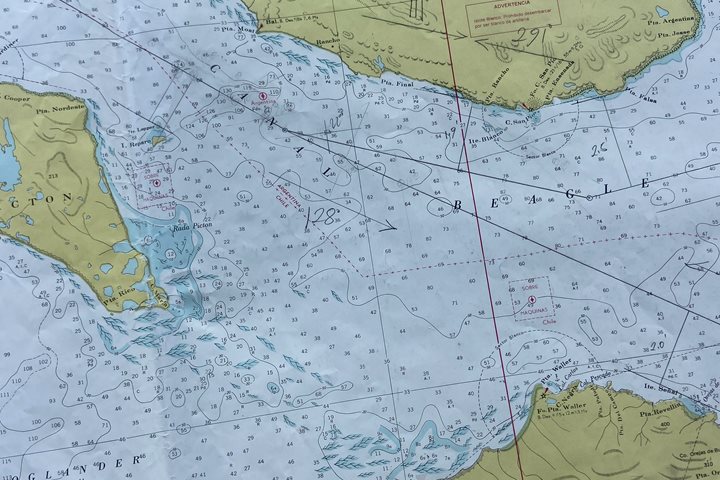This morning aboard National Geographic Endurance, we awoke to thick, dense fog and calm seas. We cruised north and then east, where we left the western waters of the Antarctic Peninsula and entered the Weddell Sea in the Antarctic Sound. During our transit, we enjoyed presentations. National Geographic photographer Tyrone Turner offered a talk entitled, “On Assignment: The Northeast of Brazil,” and naturalist Erin Britton offered another, “Antarctic True Seals—Ice Specialists.”
After lunch, we entered the Weddell Sea. The sea is named after Scottish sailor James Weddell, who entered the sea in 1823 after mistaking some large tabular icebergs for land. Our ship’s officers expertly guided the vessel through the icebergs, and we made good progress toward our afternoon destination, Devil Island. The island is named for its two horn-shaped peaks, which resemble the horns of a lurking devil. This made many of us wonder, “Why are so many volcanic features worldwide named after the devil?”
As we approached Devil Island, the fog cleared and the view was magnificent. All around us, glaciers flowed off landmasses and the mesas of volcanic lava flows. Then a fin whale was spotted, followed by killer whales, a large group of humpback whales, Antarctic fur seals, leopard seals and Adélie penguins. We changed plans and decided to do a Zodiac cruise because of the absolute abundance of marine life here. What happened on the Zodiac cruise is barely describable in words. It was incredible to see the natural behavior of so many types of Antarctic wildlife up close and all around us. The viewing was so superb that we decided to abandon the shore landing and keep cruising for a total of three hours!
Meanwhile, National Geographic Endurance maneuvered close to Devil Island to pick us up after such an exciting Zodiac cruise. We were all happy to be back on the ship to swap amazing stories. Just as we cruised out of the bay and recap was starting, we spotted more killer whales just in front of the ship. All told, there were as many as 200 killer whales (type B) seen here today! Mixed in among the killer whales was an Antarctic fur seal and a humpback whale, but there was no danger to them by any of the killer whales.
After dinner, naturalist Ezra Siegel held a rousing game of Antarctic trivia. Our oddly named teams rose to the occasion. We all had fun and realized how much we have learned about this incredible place. As twilight approached, pink light beautifully illuminated the cliffs and icebergs. We cruised farther south into the Weddell Sea, in search of new adventures.







